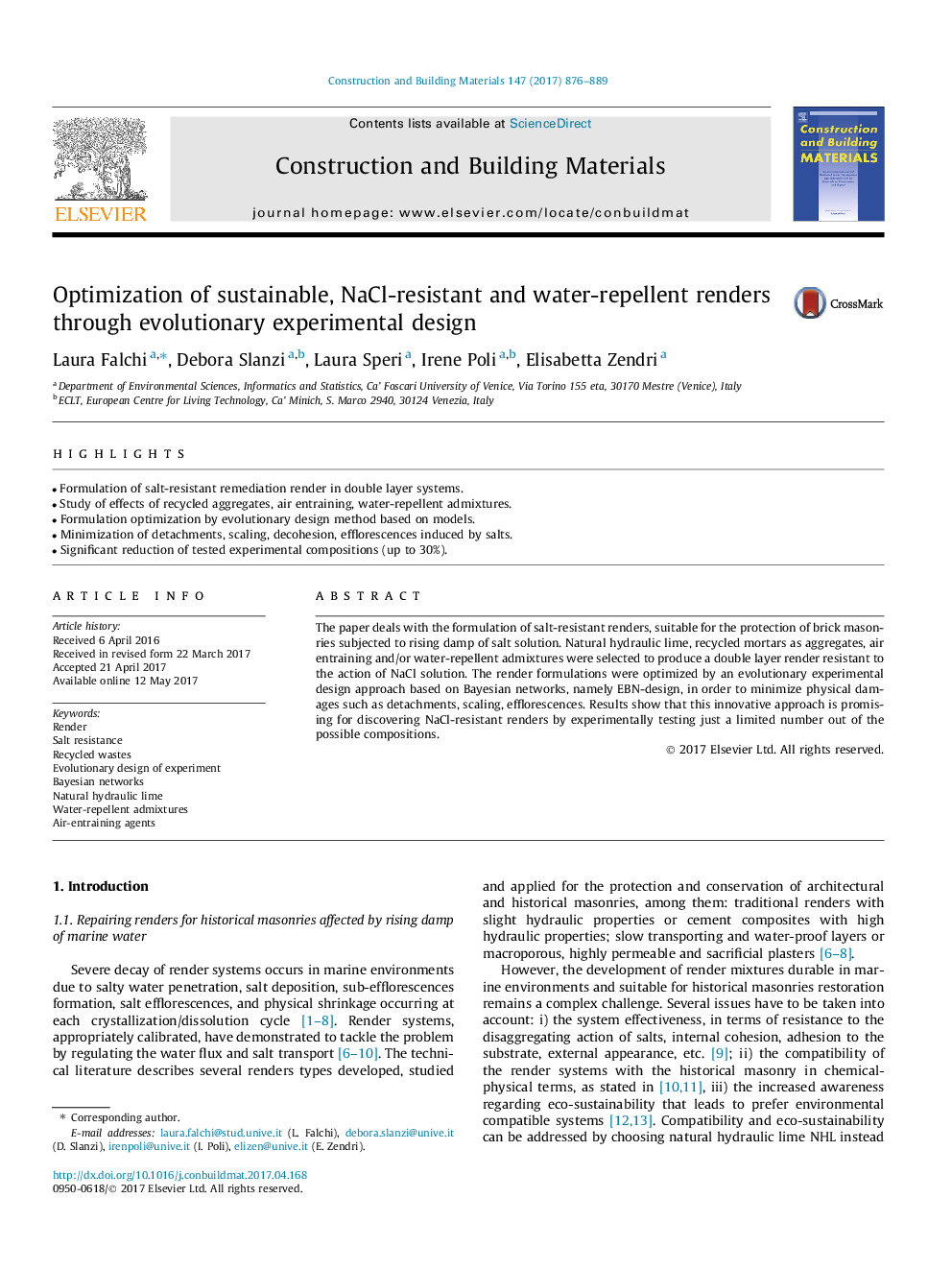| Article ID | Journal | Published Year | Pages | File Type |
|---|---|---|---|---|
| 6480641 | Construction and Building Materials | 2017 | 14 Pages |
â¢Formulation of salt-resistant remediation render in double layer systems.â¢Study of effects of recycled aggregates, air entraining, water-repellent admixtures.â¢Formulation optimization by evolutionary design method based on models.â¢Minimization of detachments, scaling, decohesion, efflorescences induced by salts.â¢Significant reduction of tested experimental compositions (up to 30%).
The paper deals with the formulation of salt-resistant renders, suitable for the protection of brick masonries subjected to rising damp of salt solution. Natural hydraulic lime, recycled mortars as aggregates, air entraining and/or water-repellent admixtures were selected to produce a double layer render resistant to the action of NaCl solution. The render formulations were optimized by an evolutionary experimental design approach based on Bayesian networks, namely EBN-design, in order to minimize physical damages such as detachments, scaling, efflorescences. Results show that this innovative approach is promising for discovering NaCl-resistant renders by experimentally testing just a limited number out of the possible compositions.
